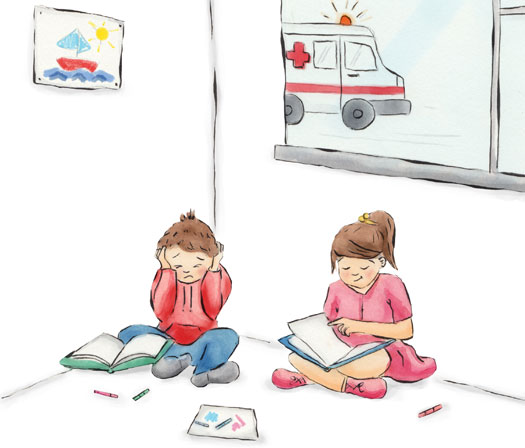Conditions
Sensory Processing Disorders
Definition:
Sensory Processing is a term that refers to the way the nervous system receives messages from the senses, such as tactile, auditory, visual etc. and then turns these into appropriate motor and behavioural responses. Sensory Processing Disorder occurs when the messages received are either disorganised, blocked or interpreted in an incorrect manner. This can cause inappropriate responses in relation to different sensory channels. Sensory Processing Disorder can be measured on a continuum, with minor to major disruptions being caused throughout the child’s daily life.
Difficulties the child may experience:
- Difficulties with fine and gross motor co-ordination.
- Social isolation.
- Lack of self esteem.
- Emotional and behavioural issues.
- Academic delay.
- Poor understanding of self.
- Disruptive behaviour.
- Anxiety.
- Depression.
- Aggression.
- Difficulty maintaining relationships.
Aims of therapy:
Hemispheres aim to integrate the different areas of the central nervous system which play a role in the processing of the sensory systems. We do this by facilitating the integration of the reflexes which help mature the central nervous system.
We therefore aim to improve:
- Fine and gross motor co-ordination.
- Awareness of self.
- Improve self esteem and confidence.
- Improve academic performance.
- Develop relationships with peers and family.
- Reduce anxiety and aggression towards others.
- Help children gain understanding and awareness of their own body.

Hemispheres Approach:
Hemispheres use a combination of movement, vision and auditory activities to stimulate and integrate the sensory processing systems. In natural development movement is the first sensory channel that a child gains control of, and this is dependent on the integration of certain reflexes. Our programme works through these reflexes by providing the parent with a daily programme of activities to be completed at home. The regular delivery of the movements assists the body to accept and integrate the sensory systems, thereby building a foundation for change, rather than compensation. We use pre-screening tools such as the Sensory Profile to appreciate the impact that sensory processing difficulties are having at home and school, and support other professionals with advice and strategies to use whilst the child is following the motor programme.
Average duration:
The length of time will vary, depending on whether the sensory processing difficulties exist with another condition such as Autism, Developmental Delay and Dyspraxia. On average children with sensory processing difficulties receive between 6 – 18 sessions. Improvements are noticeable as the child progresses through therapy.
Copyright © 2025 | Privacy Policy


